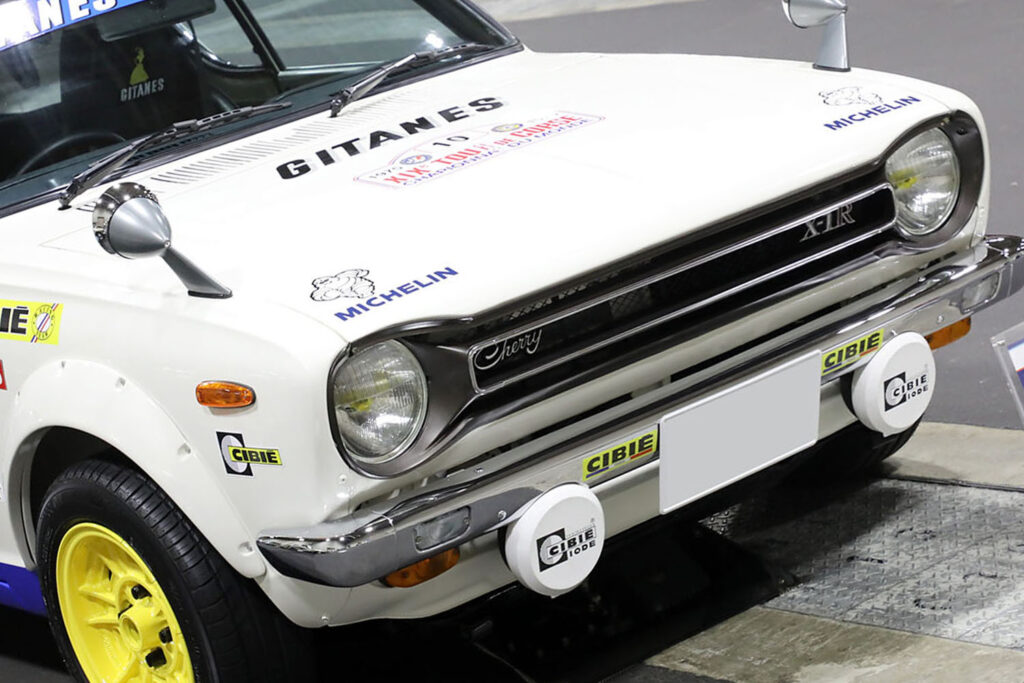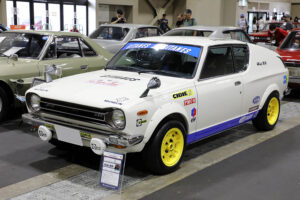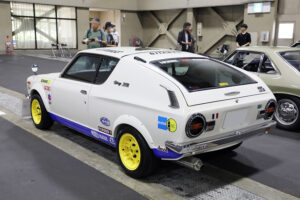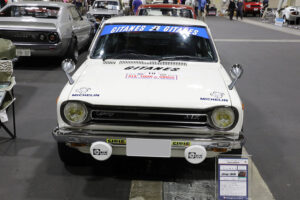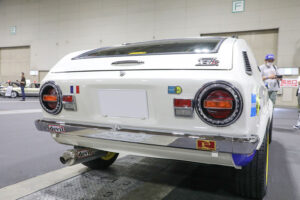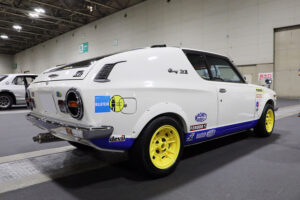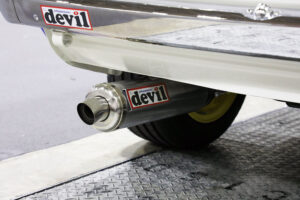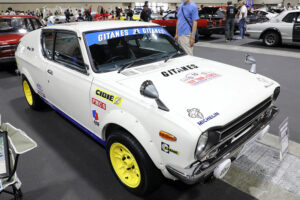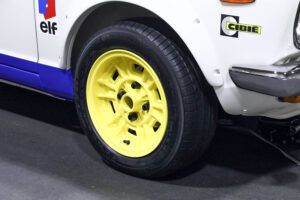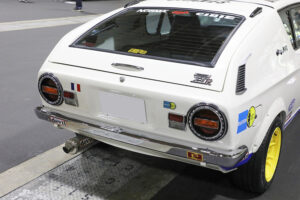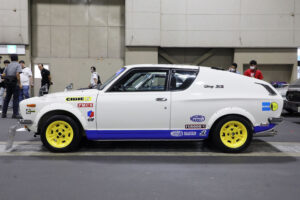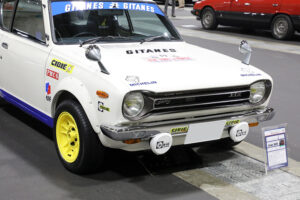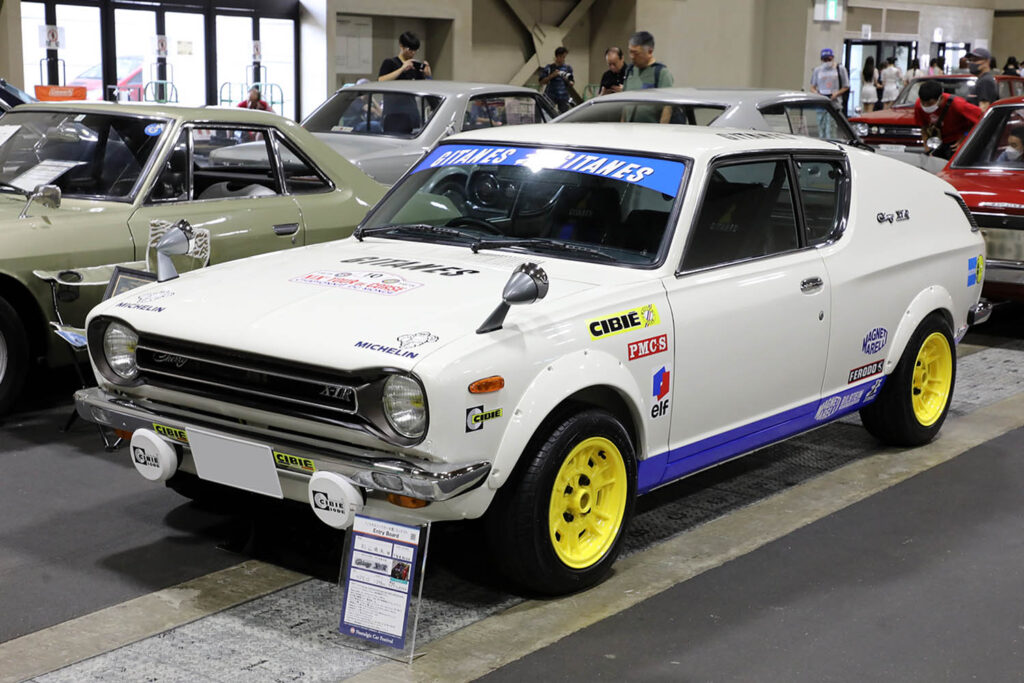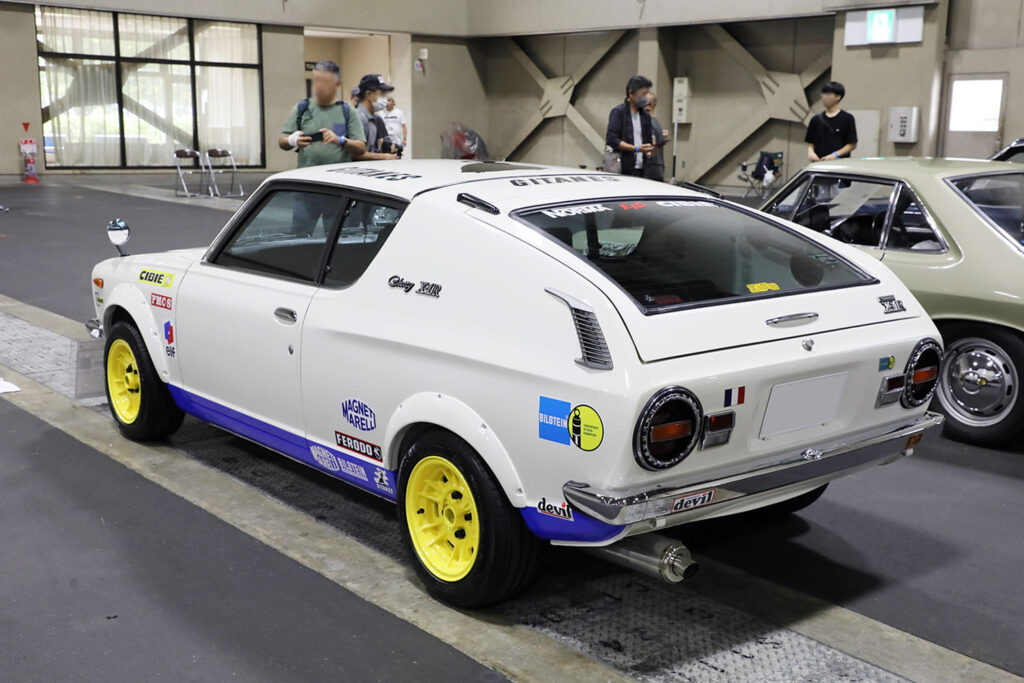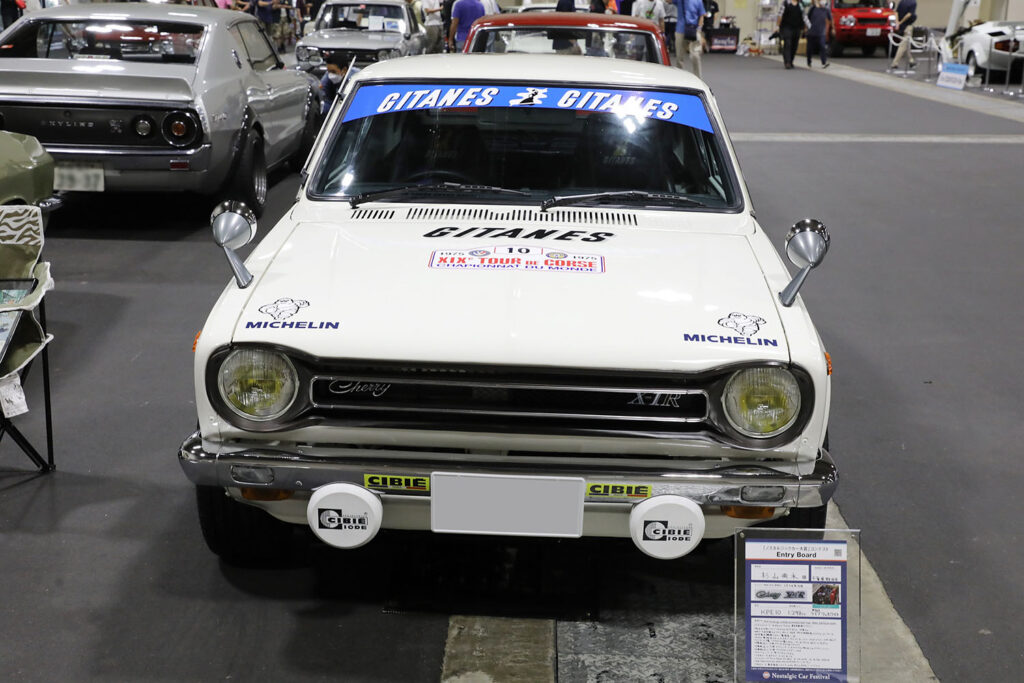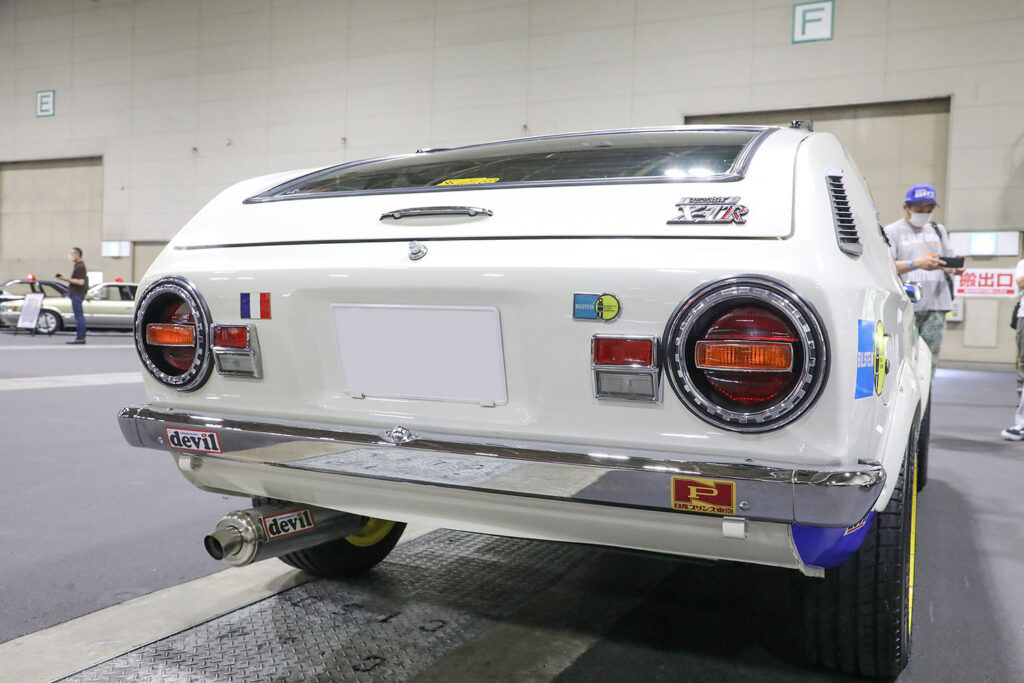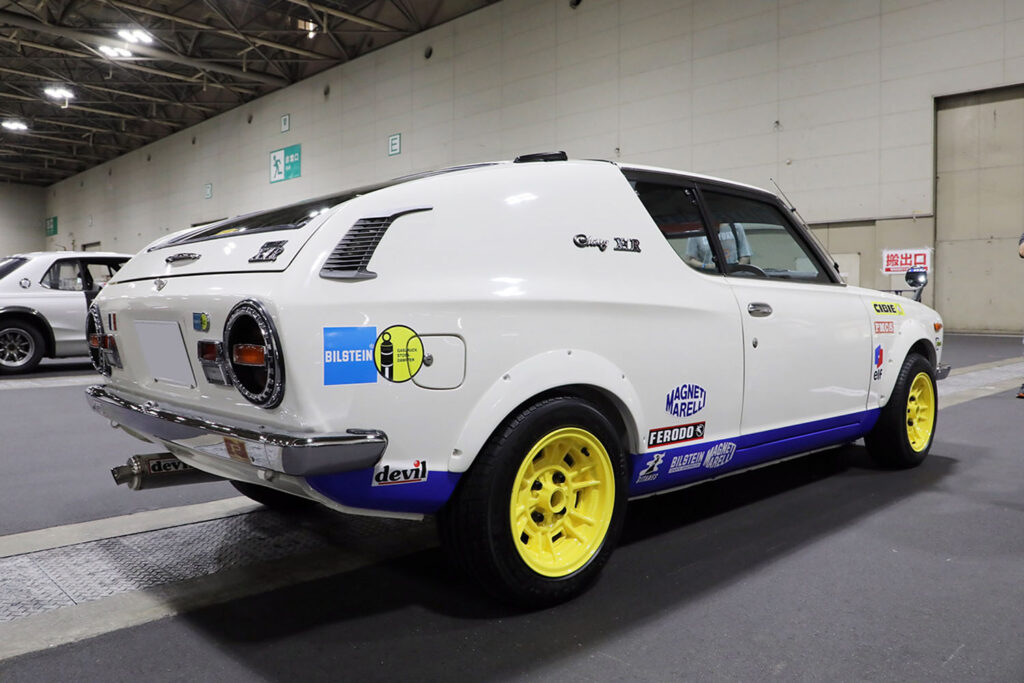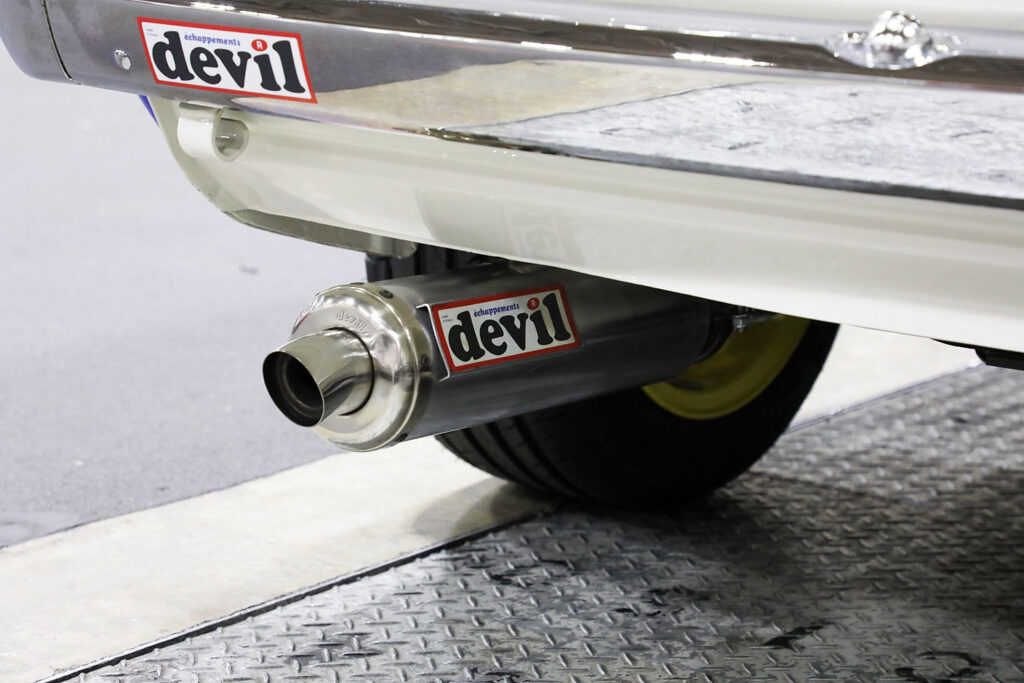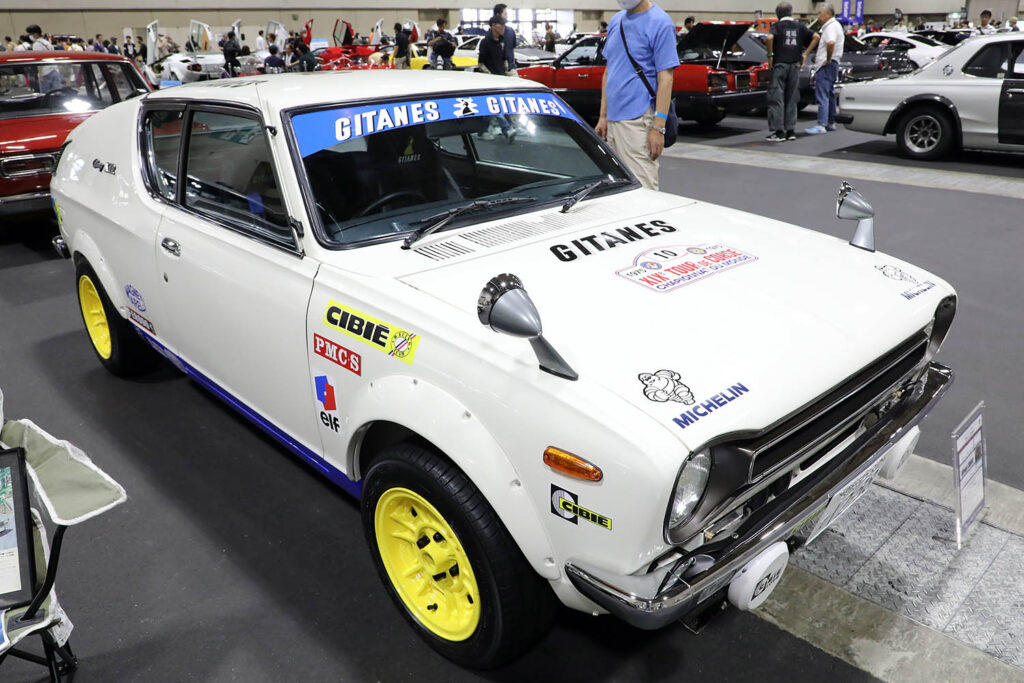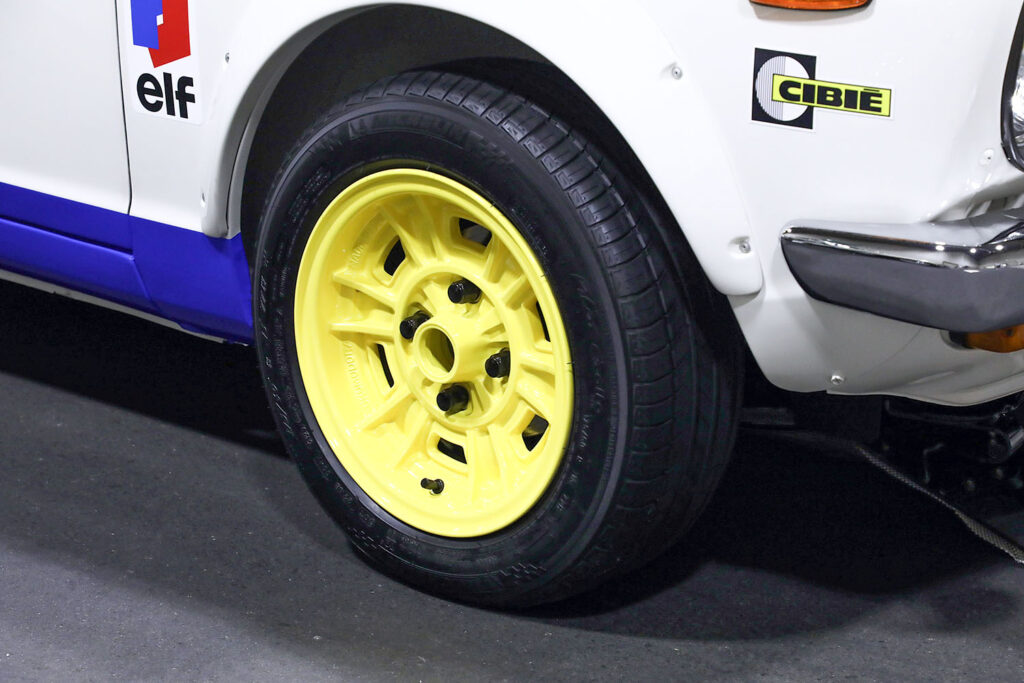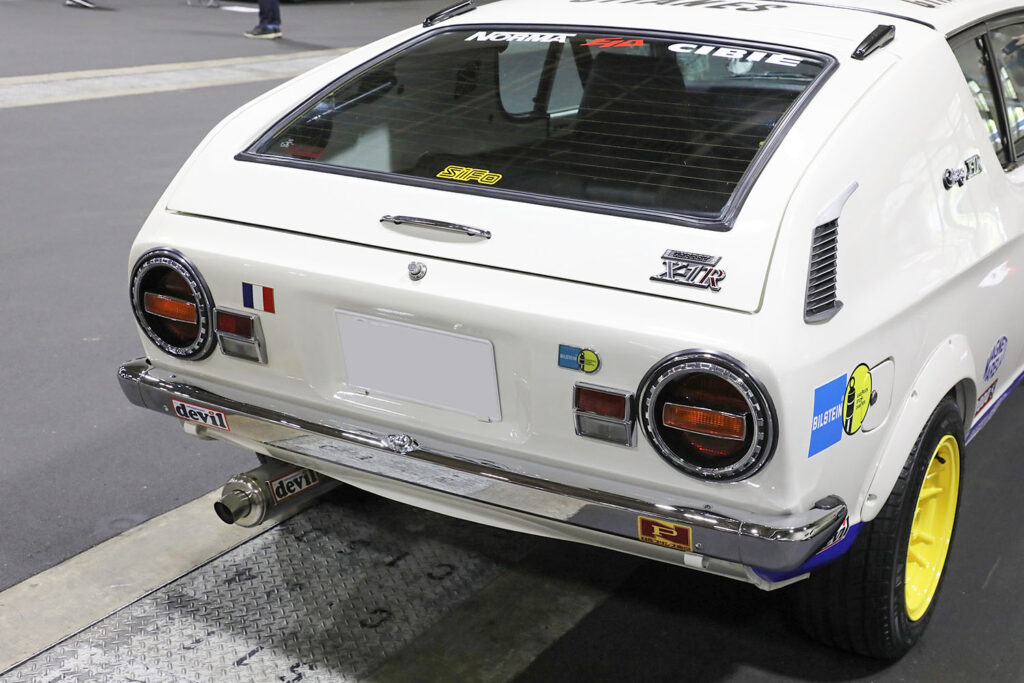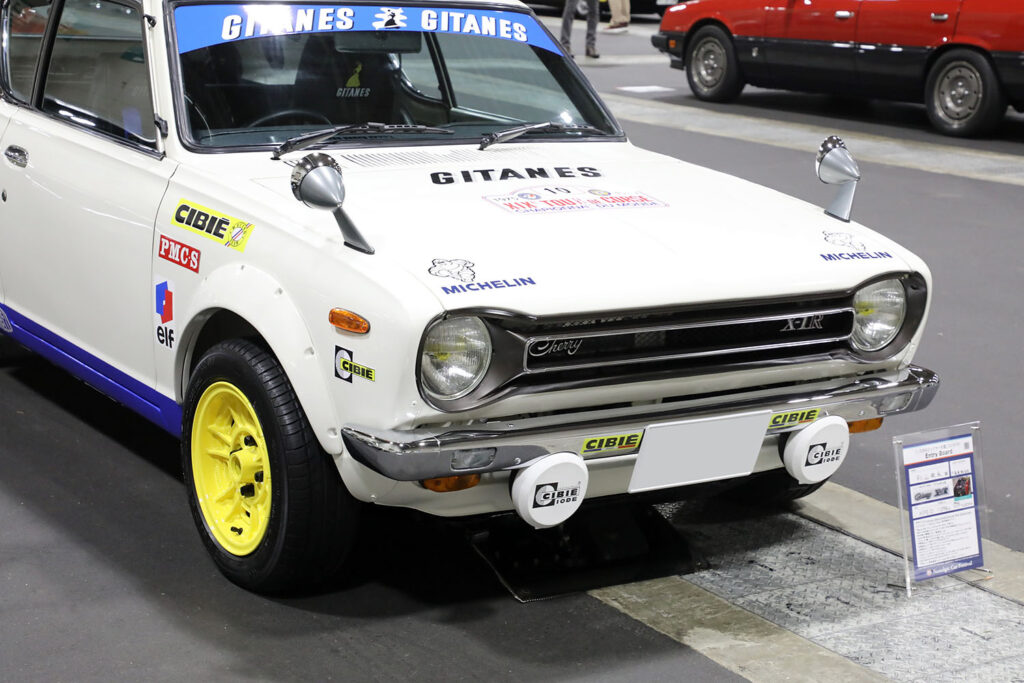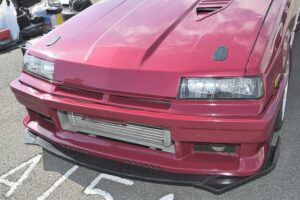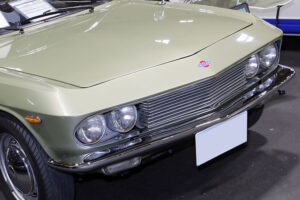The Cherry X-1R arranged in “Gitanes” specs
At the height of Japan’s high-growth period, the Japanese automobile industry was in the midst of fierce competition to develop new models, with Toyota and Nissan pushing forward in step with economic growth under the themes of “bigger” and “more luxurious” with the “Corolla” and “Sunny” respectively. In 1970, the Nissan “Cherry” was introduced with the hope that it would grow like the cherry blossom, a flower loved by many Japanese people. Mr. Sugiyama’s favorite car is a 1974 first-generation KPE10 “Cherry Coupe X-1R,” which is a higher-end model. What kind of car is it?
The FF Cherry overturned RWD absolutism
The Nissan “Cherry” launched in October 1970 changed the thinking that had previously been based on front-engine rear-drive (FR) absolutism, and the superior value and potential of front-engine front-drive (FF) cars were discovered in terms of popular cars as well as motor sports, This brought about a major change in the times.
Mr. Sugiyama drives a 1974 KPE10 “Cherry Coupe X-1R”. The Cherry was Nissan’s first FWD car, and it was a car that offered comfort comparable to RWD 1500cc class cars, as well as excellent dynamic performance.
The FF structure, with the engine mounted transversely, the driveshaft shortened, and the powertrain systems such as the transmission and differential integrated into a single unit, was designed to reduce manufacturing costs and provide a spacious design with a roomy interior. </p
The model lineup consisted of the X1, a high-performance grade equipped with an A12 engine, at the top, followed by the GL, Deluxe, and Standard grades. There is a record that it was sold at a slightly lower price than the Sunny, which was a popular car at the time.
In September 1971, a three-door coupe model with a lower overall height and longer overall length than the sedan appeared. The exterior, with its large rear gate and uniquely shaped quarter pillar combined with Mach lines, was called the plain back style, a form that symbolized the originality of the Cherry.
This coupe model was overwhelmingly more popular than the sedan immediately after its debut, especially among the younger generation. The reason for this was largely due to the influence of motorsports, which were attracting a lot of attention at the time.
The FF’s unique driving style, such as “tucking in,” was demonstrated in races
The “Fuji Masters 250km Race” held in October 1971, was the debut race for the Cherry Coupe X1. Nissan entered three works machines in the race, and the Cherry won pole position in the qualifying round. In the final race, it rained heavily, and while the RWD cars struggled mightily, the Cherry driven by Kurosawa and Tohira, both of whom drive FWD cars, showed the consistent performance to finish one-two in the race, which was widely covered by various media outlets.
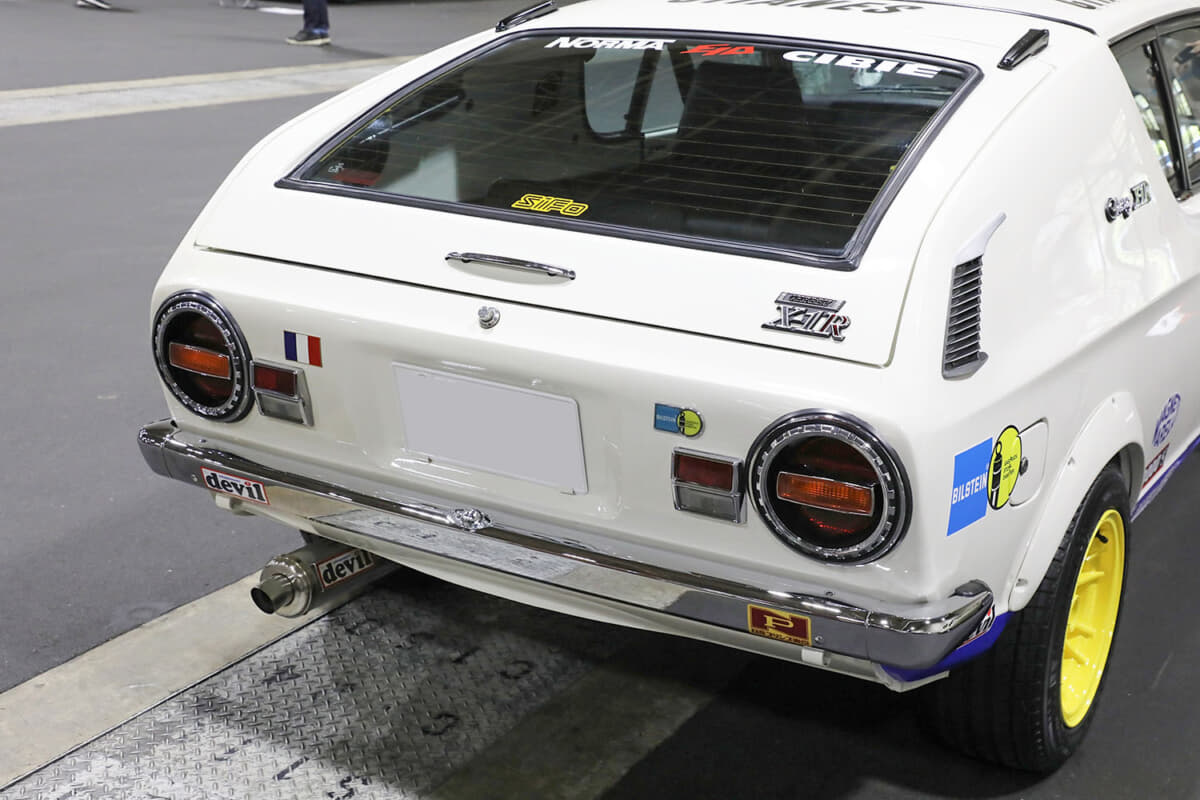
The Cherry continued to be extremely successful, showing overwhelming strength in TS races along with the rear-wheel drive Sunny equipped with the same type of engine. The Cherry TS specification also attracted the attention of Kazuyoshi Hoshino, who belonged to Omori Works at the time, for his driving style. One of the most popular driving techniques that anyone interested in driving has heard of is “tuck-in,” a driving technique that takes advantage of the characteristics of FWD cars. Specifically, it is a driving technique in which, when changing the direction of the car in cornering, the driver momentarily relaxes the accelerator pedal, steps on the brake and, while the front load is generated, sharply cuts the steering wheel to the inside of the corner at the same time, intentionally sliding the rear tires.
It was Kazuyoshi Hoshino, whom we all know very well, who excelled at this tuck-in maneuver, which is only possible with FWD cars, and used his skillful technique to go faster than anyone else on the circuit and win many victories. Although he was not a works driver at the time, he was feared and called “Hoshino the Cherry” for his speed.
Its catchphrase was “a pure-blooded machine that kicks the earth”
The popularity of the Cherry Coupe reached its peak with the introduction of the X-1R in March 1973. Sugiyama’s car is also a model from this period in terms of year, and the most impressive feature is the front and rear over fenders that were installed based on the coupe X-1. In terms of details, the front grille, bumper seats, and door trim were also changed, but what was most shocking was the installation of wide fenders that asserted the car’s status as a driving car. The overall width was greatly increased, and 165/70-13-inch tires and wheels were mounted on them. The suspension was a hard-rated set of 4-wheel independent suspension, and a front stabilizer was set to reduce roll and increase the car’s potential as a more aggressive vehicle. The catch copy at the time was “a pure-blooded machine that kicks the ground. It was a hot model that attracted attention as both a racing machine and a car that could be driven on the street.
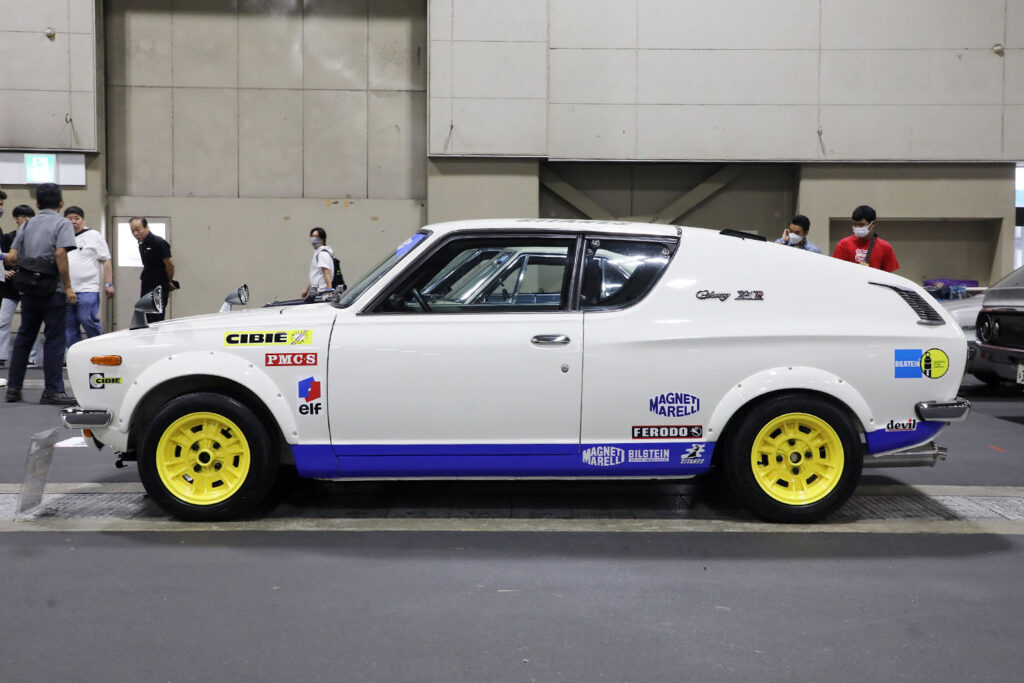
Furthermore, Mr. Sugiyama’s beloved Cherry Coupe X-1R has a unique coloring. If you look closely, you can see the brand logo of “GITANES,” a popular cigarette manufacturer in France. The front window beehive also has a design of a female gypsy holding a fan and dancing in the smoke. Although it is unknown if such specifications existed, Mr. Sugiyama has competed in gymkhana and other competitions with this racy X-1R. Therefore, the suspension, engine, and brakes had been tuned, and the interior was equipped with full bucket seats and a Whelan’s 4-point harness.
The Cherry Coupe X-1R is still a cool car with a unique and innovative style that brings back memories of the past. Mr. Sugiyama’s car life is wonderful, as he has modified his beloved car to make it a car that can be used for both competitions and fun. This car enriches his life and fills him with a sense of fulfillment. This Cherry Coupe X-1R must be such a car for Mr. Sugiyama.





